Sequels are practically as old as cinema, with the very first thought to be The Fall of a Nation (1916), a cheapie knockoff/follow-up to the incredibly racist The Birth of a Nation from a year earlier. Ever since Hollywood has been keen to cash-in on sequels and ongoing sagas. Before the term “movie franchise” was even a glint in a studio executive’s eye, MGM was churning out high-quality Thin Man movies at MGM throughout the 1930s and ‘40s while Universal was introducing us to both Dracula’s Daughter (1936) and Son of Frankenstein (1939). One must wonder why the studio never got those two crazy kids together.
And yet, while sequels have been around forever, they’ve generally been seen as lesser-than until recently. By their nature, sequels are derivative, and there have been many filmmakers who were all too happy to embrace sameness while filling their working hours before and after lunch. A case might even be made that the first sequel to truly legitimize the endeavor was The Godfather, Part II in 1974. Even then, folks in the industry couldn’t stop snickering afterward when Sylvester Stallone announced there was yet another chapter in the life of Rocky Balboa to be told.
In the 21st century, this all seems quaint. Nine of the 10 highest grossing movies of last year were sequels (and the 10th was another Batman reboot). And many of them were received as enthusiastically by critics as moviegoers. Hell, two of them were nominated for Best Picture at the Oscars. So sequels, as it turns out, can have artistic merit beyond being “the same thing, but different.” In fact, more than a few have surpassed what their predecessors accomplished. Here are some of them.
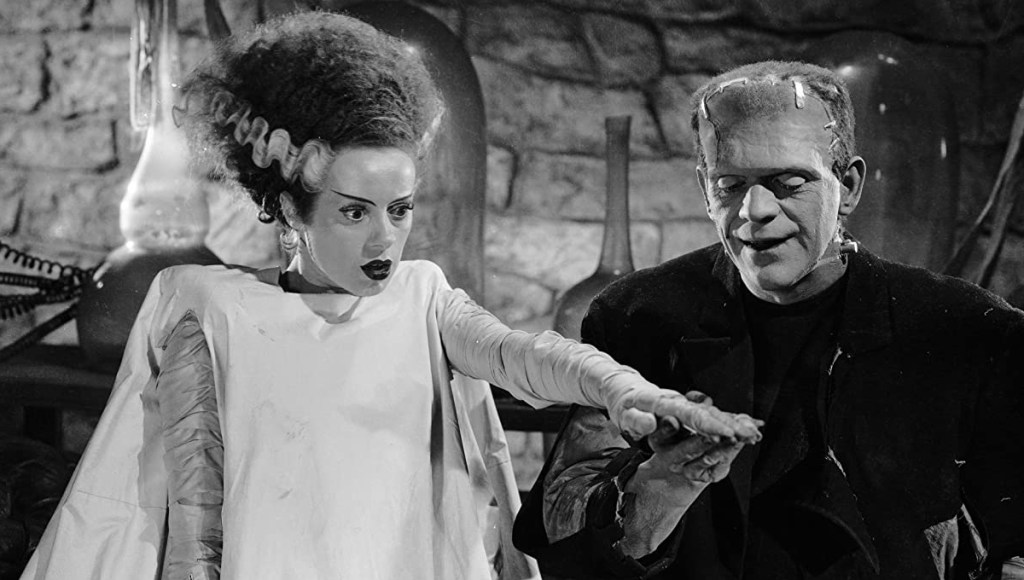
Bride of Frankenstein (1935)
Director James Whale (along with makeup artist Jack Pierce and actor Boris Karloff) created one of the greatest monsters of the silver screen in Frankenstein (1931). The impression they left was so immense, in fact, Whale had cold feet about doing a sequel until Universal Pictures offered him carte blanche to do whatever he wanted with it. He took the opportunity to craft a true auteur’s piece, as well as the first horror-comedy.
Equal parts camp and chills, Bride of Frankenstein has a wicked sensibility that borders on blasphemous. Dr. Frankenstein (Colin Clive) and Dr. Pretorius (Ernest Thesiger) are a pair of dudes who want to play house without any women other than the baby girl they give birth to in “the Bride” (Elsa Lanchester), a creature with the elegance of a swan, and the hissing temperament to match. But what truly elevates this is Karloff’s Monster developing a poet’s soul. Now he can articulate his loneliness while sharing a cigar with a blind man… before being abandoned again.

From Russia with Love (1963)
An argument could be made that the long-running James Bond movie franchise is not so much a series of sequels as it is agent 007 having the same adventure again and again. Even under those auspices, however, there is no denying From Russia with Love—as well as many other Bond movies, including the following year’s Goldfinger (1964)—surpass Dr. No (1962) in quality. The original Bond movie is every bit a classic, introducing us to many of the things we love (or hate) about the Bond character: his swagger, his sense of refinement, half his quotable lines, and that curious habit of stumbling upon beautiful women on a beach while they’re wearing a two-piece.
Still. Dr. No is also a bit of a slog. Bond’s introduction at a casino where he tells Sylvia Trench (Eunice Gayson), “The name’s Bond, James Bond” is the stuff of legend. Five minutes of him fighting a tarantula, less so. Conversely, From Russia with Love is a taut Cold War thriller in which Bond matches wits with a corrupt Russian agent (Robert Shaw), and frankly comes up short. The series was rarely more thrilling than when Bond found himself on his knees inside a cramped car on the Orient Express, with Shaw pointing a gun at his head.
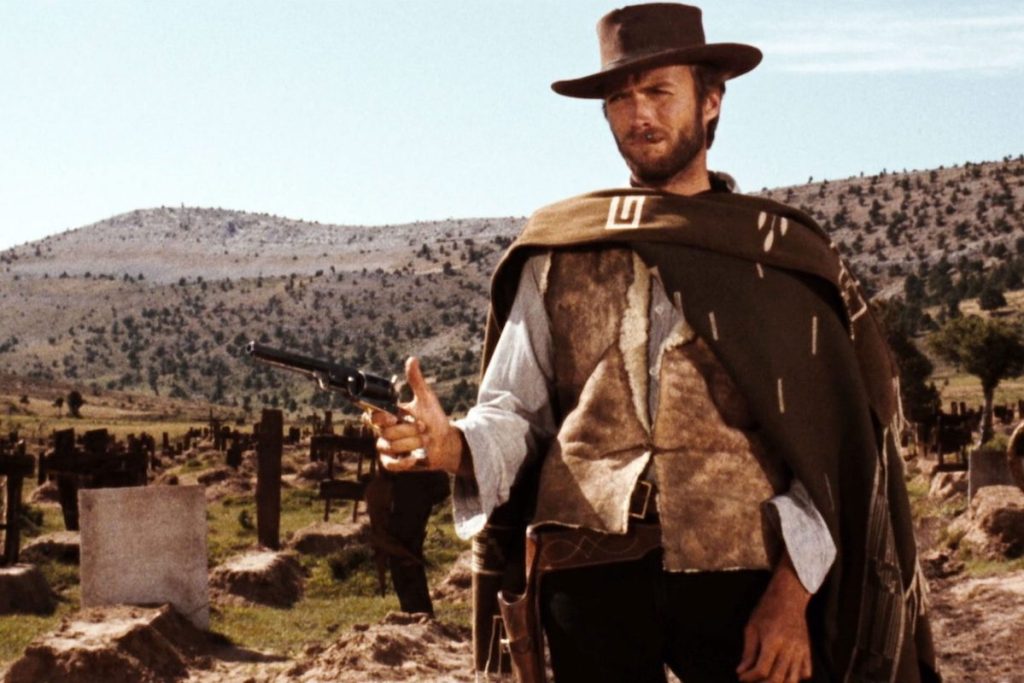
The Good, the Bad and the Ugly (1966)
We confess this one is a bit of a stretch. While many fans have speculated Clint Eastwood’s “Man with No Name” archetype is the same character across all three of director Sergio Leone’s “Dollars Trilogy” films, there is no actual evidence. You could view these as three separate narratives about slightly different desperados, each with a penchant for cigars and ponchos. However, the titles A Fistful of Dollars (1964) and For a Few Dollars More (1965) certainly suggest there is a continuity of spirit and perhaps character in Eastwood’s laconic hombre as he tries on different nicknames for every adventure.
In which case, The Good, the Bad and the Ugly is his greatest ride. While the now rechristened Blondie (Eastwood) is less “good” than he is just chaotic neutral, he makes for one charismatic pony in this horse race to buried treasure. The other two competitors, the reptilian Angel Eyes (Lee Van Cleef) and the pathetic bandit Tuco (Eli Wallach) provide a propulsive chase wherein Leone broadens his storytelling scope to include the whole Western frontier of the American Civil War. A film about greed, grit, and the pointless glory of war, this is a masterful epic that builds to the best showdown in movie history.
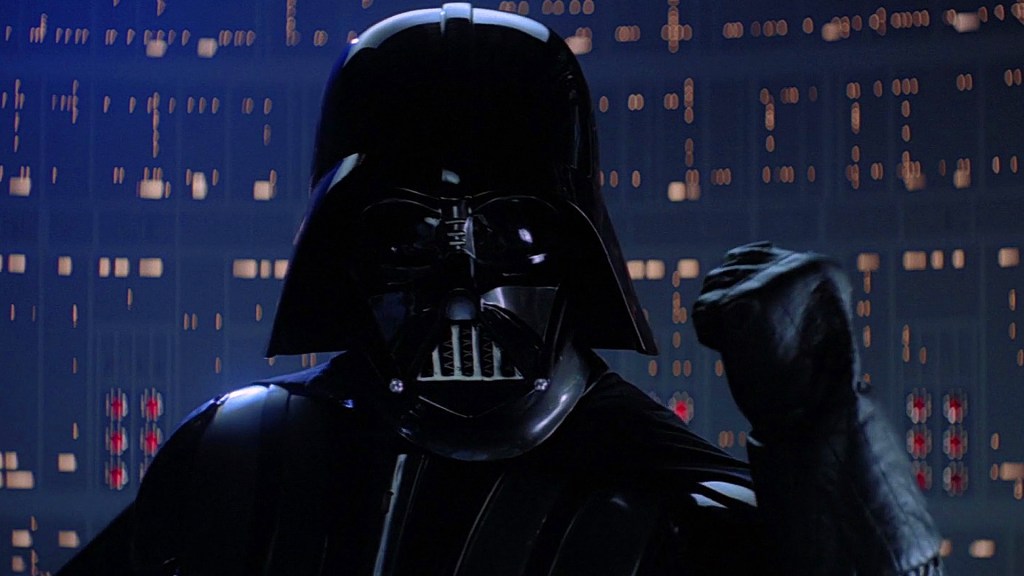
The Empire Strikes Back (1980)
George Lucas made one of the most important movies of all time when he wrote and directed Star Wars in 1977. But the best film in the galaxy far, far away came about when Lucas had the vision to then focus only on his innovations while leaving the actual writing to Leigh Brackett and Lawrence Kasdan, and the direction to Irvin Kershner. Where Star Wars was a zippy archetypal adventure bathed in starlight, Empire was a more mature, pensive, and character-driven fantasy that enjoyed hiding in the shadows where light could not enter.
The performances of all three lead actors are sharper and more comfortable, with Harrison Ford and Carrie Fisher particularly finding a romantic charm so irresistible it sold a classic line of movie dialogue (“I know”). Meanwhile Darth Vader (voiced by James Earl Jones) gets one of the best lines in cinema, period, when he tells Mark Hamill, “No, I am your father.” That this gut-punch was preceded by a fantasia of mythic grandeur—cities in the clouds, tanks the size of mountains laying waste to frozen tundras, and a small green frog-man with the powers of a god—makes this the richest and most satisfying star war.

Star Trek II: The Wrath of Khan (1982)
Star Trek: The Motion Picture (1979) undoubtedly has its fans, but count us in the camp that prefers the immediate follow-up directed by Nicholas Meyer. While The Motion Picture has a charm with its rosy, utopia-obsessed vision of the future, there wasn’t much in the way of dramatic conflict or catharsis. It’s a picture that seemed most content imagining William Shatner in a leotard. By contrast, Wrath of Khan doesn’t attempt to soft-pedal human nature; it admits petty motivations like revenge and spite can torpedo even life in the Garden of Eden.
Indeed, it is while Starfleet is trying to build such a paradise, where Capt. Kirk can feel young, that his old nemesis Khan (Ricardo Montalban) returns to inflict a terrible vengeance on Kirk and the Starship Enterprise. The film features the greatest villain in Star Trek lore, as well as the most tender moment in the friendship between Kirk and Mr. Spock (Leonard Nimoy). Live long and prosper.
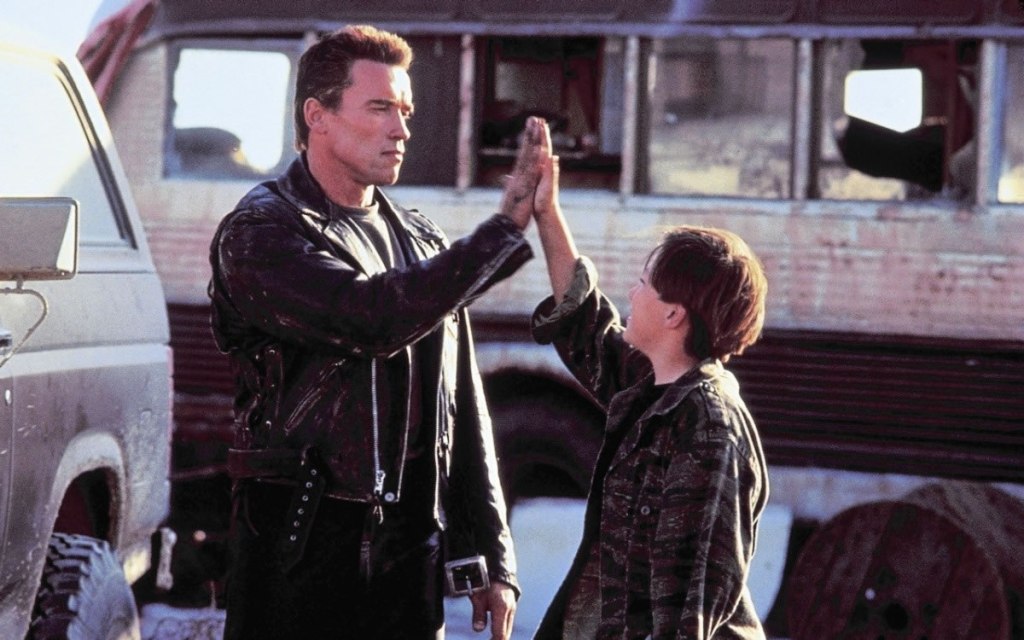
Terminator 2: Judgment Day (1991)
James Cameron has an obvious knack for sequels. While we still prefer the eerie naturalism of a crew being fed to a monster by the company in Ridley Scott’s Alien (1979) over Cameron’s bombastic action successor, Aliens is still a supremely entertaining spectacle. Cameron then did it one better when he trumped his own breakout hit, The Terminator (1984), with this touchstone of ‘90s blockbuster cinema. Terminator 2 is a bigger, louder, and more advanced chase movie that builds on everything Cameron did the first time—and then improves on it.
This is partially due, of course, to Cameron helping pioneer CGI effects in ways that felt exciting instead of deadening back then. But it also comes from the novel idea of turning the previous film’s villain (Arnold Schwarzenegger as the titular terminator) into the sequel’s hero. He’s been programmed to the side of angels, but he’s also dated and obsolete in the face of liquid/digital advancements embodied by the T-1000 (Robert Patrick).
More impressive though is the choice of developing Sarah Connor (Linda Hamilton) out of the damsel role. Sarah’s now every bit as ferocious and relentless as the Terminator in her quest to protect her son John Connor (Edward Furlong). Her one blindspot, then, is being forced to accept the lad lacks her technophobia as he latches onto Arnold’s paternal robot.

Toy Story 2 (1999) and Toy Story 3 (2010)
Toy Story 2 was never originally intended for theaters. Heck, it wasn’t even intended for Pixar. Greenlit in an era where Disney loved doing cash-in, direct-to-video sequels, the Mouse had gone behind Pixar’s back to make Toy Story 2. When the animation house found out, they were mortified. They insisted on making the film, which wound up being so good it changed the direction of Sheriff Woody and Buzz Lightyear (Tom Hanks and Tim Allen)’s lives forever.
The first Toy Story is a family movie classic and a lovely reworking of the then ubiquitous buddy movie formula by way of revolutionary 3D animation. Pixar would build from those foundations for the next several installments, escalating their emotional and narrative ambition each time. This started by essaying the fear of every toy (and parent): obsolescence as your child grows up. You have no soul if you don’t mist up while watching the backstory of Jessie (Joan Cusack) in Toy Story 2.
Eleven years later, Toy Story 3 made that abstract fear for Woody a reality as his dear Andy goes to college and says goodbye forever to the cowboy doll, the spaceman, and the rest of the gang in a film that was released as the original movie’s target audience entered or finished their own university years. It’s heartbreak to infinity and beyond.
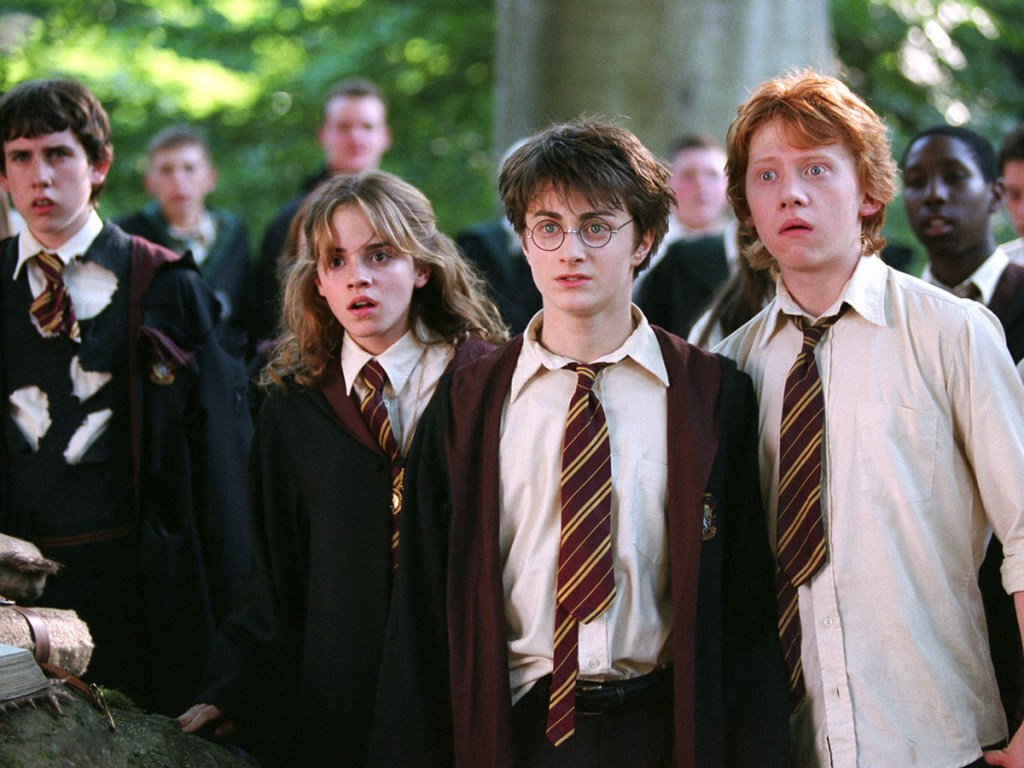
Harry Potter and the Prisoner of Azkaban (2004)
Author J.K. Rowling initially rejected the idea of there being a Hogwarts a capella group, complete with singing frogs, in Harry Potter and the Prisoner of Azkaban. After all, it wasn’t in her book. Yet director Alfonso Cuarón insisted and, better yet, got John Williams to write the faintly sinister and all-around delightful “Something Wicked this Way Comes” for the scene. It’s one of the best moments in any of the Harry Potter films.
It also is a snapshot of how much better these movies could’ve been if auteurs like Caurón were allowed to venture further off the page to make strong creative choices. Prisoner of Azkaban is full of them, such as allowing the Hogwarts kids to dress like kids (as opposed to always being in their school uniforms around the clock), and encouraging Hermione (Emma Watson) to respond to the perpetual racist bullying she endures. Best of all, the movie has a sleek, exacting pace that makes it easily the most exciting Potter film as Harry comes face to face with the godfather he thinks he hates, a regal Gary Oldman as Sirius Black.
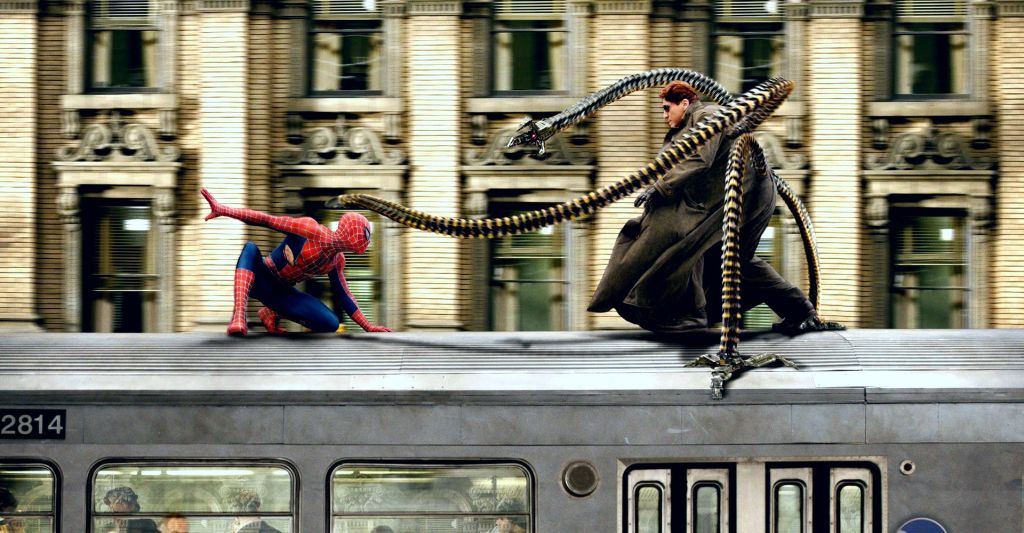
Spider-Man 2 (2004)
Sam Raimi’s first foray into superhero cinema proved audiences could embrace a faithful, colorful adaptation of Spider-Man comics. The sequel, however, gave Raimi the breathing space to make a definitive cinematic approximation of the wallcrawler. With a more measured pace and confidence, Spider-Man 2 synthesizes all the core elements of who Peter Parker is for the big screen: his sense of burden, noble purpose, and frustration in a lifestyle where being a superhero undermines his personal life.
The film also works as a quirky New York City romantic comedy, enjoying a timeless effervescence as Peter (Tobey Maguire) pines for Mary Jane (Kirsten Dunst), unable to get the girl while also navigating an eccentric ensemble of oddballs in his life at work and home. Plus, every once in a long while, a stunning and still visually kinetic fight breaks out where he must battle Doctor Octopus (Alfred Molina) a hundred stories above the streets of Manhattan.
Classic Spidey.
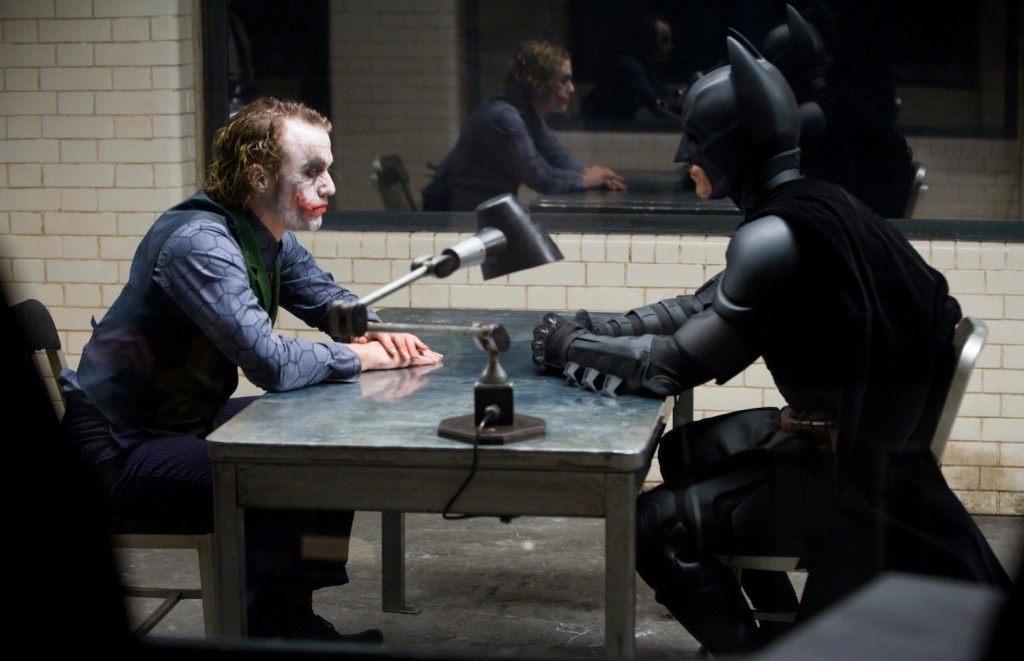
The Dark Knight (2008)
Continuing the trend of superhero movie directors refining their vision the second time out is Christopher Nolan’s extraordinary achievement in The Dark Knight. With Batman Begins (2005), Nolan proved audiences could take the Caped Crusader seriously if he populated his world with A-list prestige actors, and grounded it in a mature (if not necessarily realistic) verisimilitude. Still, that film was the classic superhero movie origin story formula as set in stone by Richard Donner in 1978.
The Dark Knight surpassed all of that, throwing out genre expectations in favor of one of the great American crime films. The battle between Batman (Christian Bale) and the Joker (an unforgettable Heath Ledger) is less the stuff of heroes and villains as it is beleaguered law enforcement and terrorism in the Post-9/11 years; the principles of order and civility vs. societal collapse. The Dark Knight still knows how to be a thrilling summer blockbuster, with some of the best action spectacle of the last 20 years. Yet in its dark heart, there is a conviction that audiences need to stare into the abyss, even if they must wear a Bat-mask to do it.
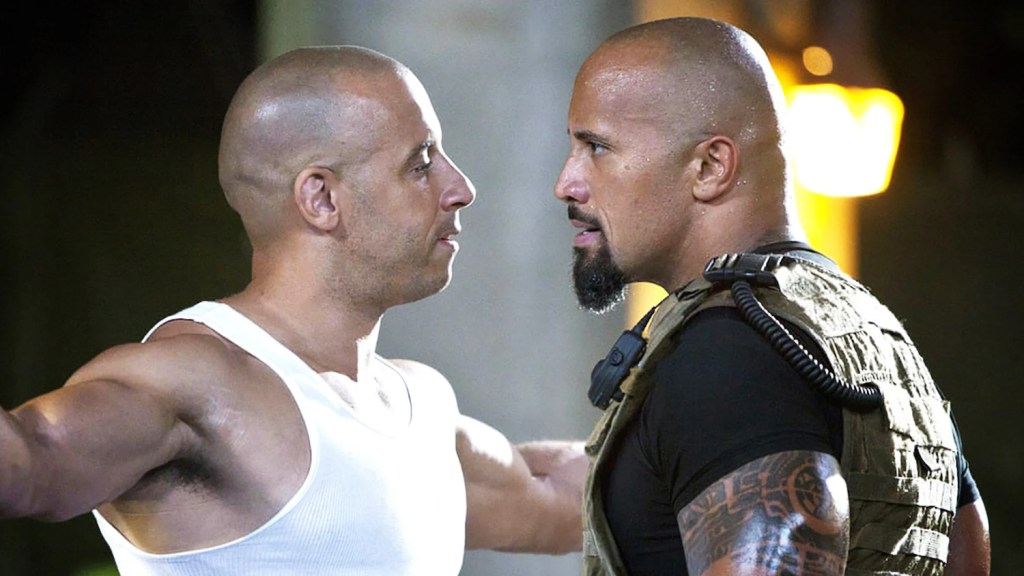
Fast Five (2011)
It’s something of a running joke at this point when folks remind you that the Fast & Furious movies were originally about a bunch of small-time street racers who in their downtime stole DVD players. That’s it. That was the whole hook.The Fast & Furious franchise as we know it now really started here, 10 years later, with Fast Five. It still remains the best one.
After doing the magic trick of reuniting the original cast for the first time in Fast & Furious (the fourth film in 2009), director Justin Lin turns these street racers into a gym rat’s idea of an Ocean’s Eleven movie. Every major character from the past four installments team up, Avengers style, to knock over a bank in Rio de Janeiro. Really though, it’s an excuse to banter at a two-hour reunion cookout with family. It also marked the introduction of Dwayne Johnson as Luke Hobbs, and the heat generated between his aggro lawman and Vin Diesel’s lackadaisical crook is so thick you spend the whole movie hoping for them to kiss.
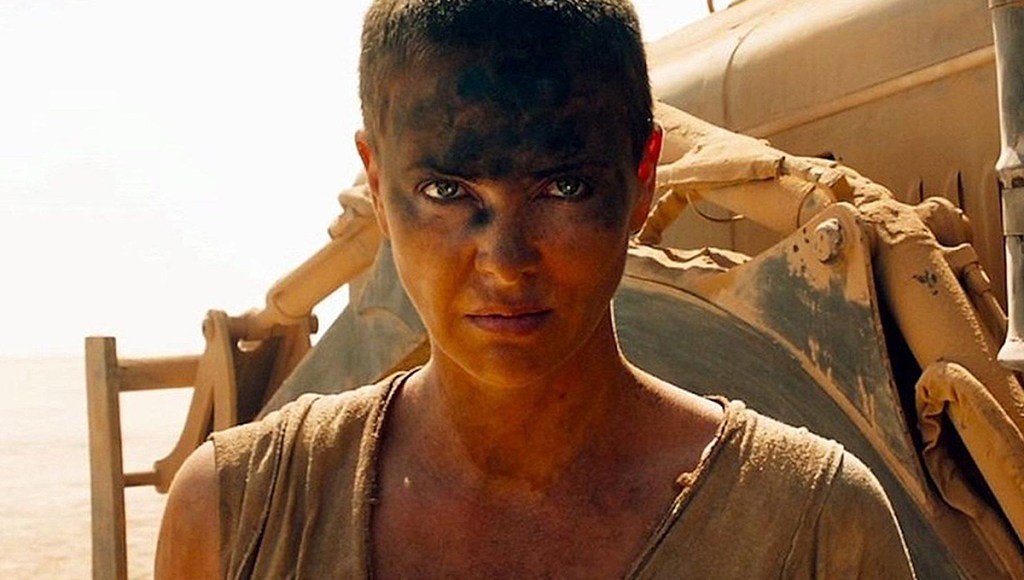
Mad Max: Fury Road (2015)
Normally, we’re hesitant to place the glossy, big-budgeted Hollywood sequel released decades later over the indie film that started it all. Yet as good as Mad Max (1979) is, and it’s great, that sci-fi Australian flick from writer-director George Miller does not feel like the full realization of his vision of a post-apocalyptic wasteland, sprawled across a dune sea. Honestly, he probably perfected the concept with Road Warrior, the 1981 sequel…. and yet Fury Road is still our favorite.
Roaming gangs of highway thugs who pirouette from beams between cars like acrobats in the Cirque du Soleil; a new religion where warriors of the titular Fury Road pray to a big semi-truck in the sky; a guy whose entire job is to shred sick metal solos from a electric guitar that shoots fire. Fury Road takes Miller’s vision of the end of the world to its furthest extreme, and finds there a more compelling hero than Max Rockatansky. Charlize Theron’s Furiosa really is one for the ages, and her ascendence at the end of the film makes this action movie Valhalla.
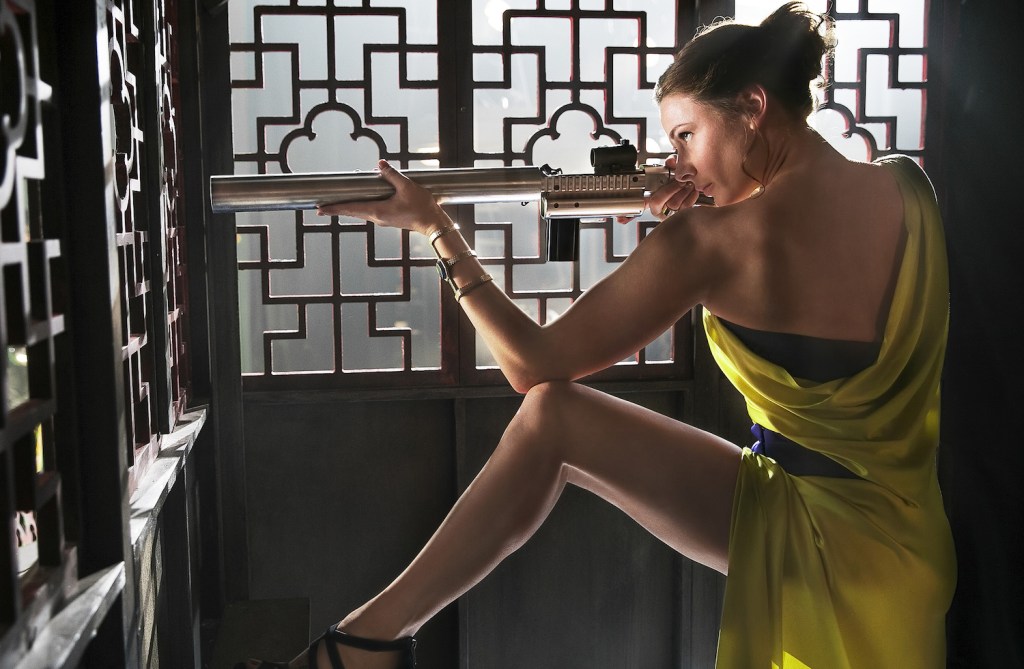
Mission: Impossible – Rogue Nation (2015) and Fallout (2018)
At this point, the Mission: Impossible franchise’s eccentric nature is well known among cinephiles, with until very recently each installment being a different interpretation of the super spy archetype played by Tom Cruise and the world he operates in. But for the longest stretch, we tended to maintain our favorite was the Post-Cold War paranoia and faintly psychological perversion Brian De Palma introduced in the 1996 original. That changed, including perhaps for Tom Cruise, when writer-director Christopher McQuarrie took the reins in Mission: Impossible – Rogue Nation.
The fifth installment would mark what has now become an insulated quartet of M:I films masterminded by McQ, who for good reason has been invited to come back time and again. He’s brought with him some of the old school glamour and sophistication of the Hitchcock influences that dotted the ’96 movie, all while ramping up the action stunt insanity that was defined by Brad Bird’s more cartoonish Ghost Protocol (2011), and a scene where Cruise Spider-Man’d up the tallest building in the world. In Rogue Nation, Cruise dangles from a plane during takeoff, with the actor strapped in on the outside, and drives a motorcycle at maddening speeds across the deserts of Morocco.
But McQuarrie also has done a superb job of bringing in a witty and knotty intelligence to the dialogue, turning archetypes into flesh and blood humans, and even letting Cruise’s Ethan Hunt meet his match in Ilsa Faust (a scene-stealing Rebecca Ferguson who is so good she’s been asked back in every movie since). It was an impressive feat, made more impressive still when they cleared the high bar again in Fallout, one of the most visually stunning action films of this century.
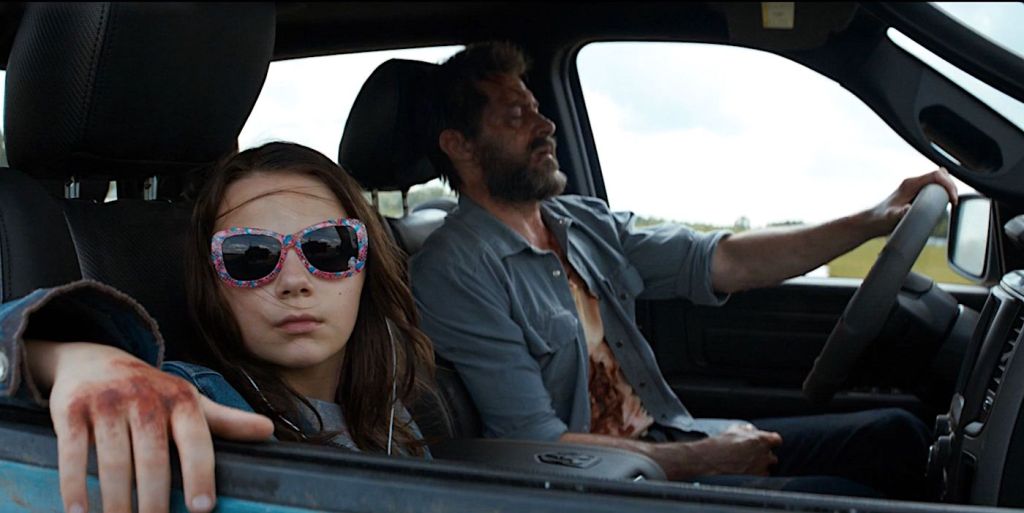
Logan (2017)
This list could be overpopulated with superhero movies. Some might say it’s because comic books’ serialized storytelling lend themselves to improving over time. We argue the genre benefits when talented stars or directors earn enough trust and goodwill from their studios to do something interesting with the material. In the case of Hugh Jackman, he starred in several X-Men movies that were improvements on the modest 2000 actioner that started it all; he also starred in several films that were far worse than the first X-flick. But he ultimately was able to top every one of them, as well as most of the superhero genre, when he and repeated collaborator James Mangold earned the latitude to end the Wolverine story on their own terms. They earned the right to make Logan.
A brooding, elegiac, and unapologetically adult drama that is only occasionally—and shockingly—violent, Logan doesn’t make a secret that it is a modern day Western. It wears allusions to Shane and Unforgiven on its sleeves. Yet it’s also sober-eyed sincere in its meditation on heroism, why we need such stories, and especially in the moment in which it was made. The mutant metaphor about oppression certainly felt vital again when, released during the Trump years, Logan leads Mexican children (including his daughter) to the Canadian border and out of the reach of bad men with guns. It was an X-Men movie for our times and a graceful sendoff to one of the most beloved superhero personas of the screen.
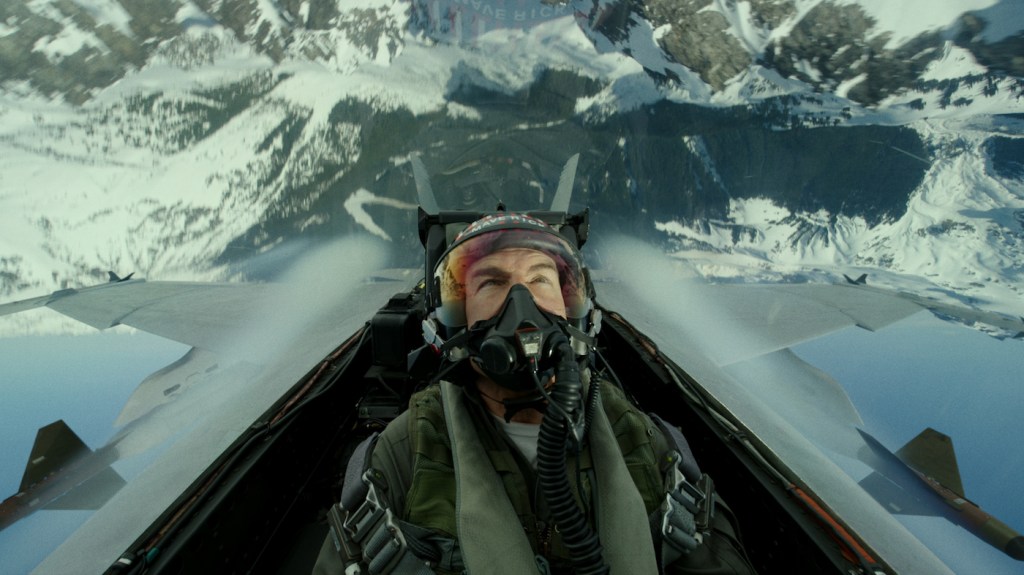
Top Gun: Maverick (2022)
We’re not going to lie. The original Top Gun of 1986 is not a good movie. In fact, it’s quite bad once you look past all the cheesy ‘80s iconography, slick visuals, and great music. So saying the much belated legacy sequel Top Gun: Maverick is better becomes something of an understatement. Maverick not only improves on Top Gun, it takes our shared affection for ‘80s kitsch and reconfigures that into one of the most satisfying summer blockbusters, as well as an on-the-nose metaphor for Tom Cruise’s entire career.
In ’86, Cruise was the young hotshot who thought he’d live forever. Thirty-six years later, he’s pushing 60 and still “on that wall” (to mix in a metaphor from another Cruise film), doing what he was doing as a kid, butbetter. And not just better than himself; it’s better than what any other so-called movie star can achieve at half his age. Cruise really does take those IMAX cameras up there in the wide blue yonder as he is doing in the G-Force neighborhood of 4Gs on film. It’s dazzling, and in a movie where his onscreen persona refuses to retire, grow into the role of “statesman,” or lay down and die, it’s strangely wistful. Keep on soarin’, Mav!
The post Movie Sequels That Are Better Than the Original appeared first on Den of Geek.


0 Commentaires